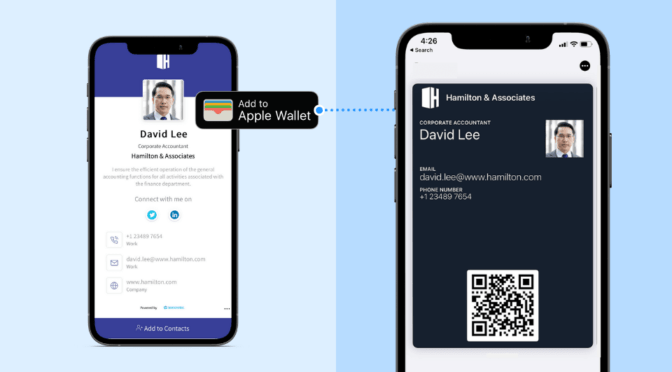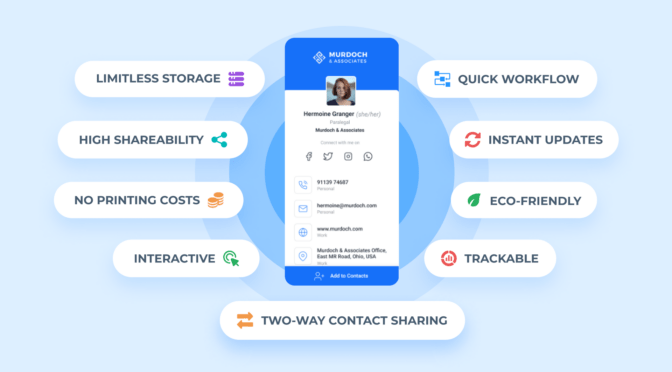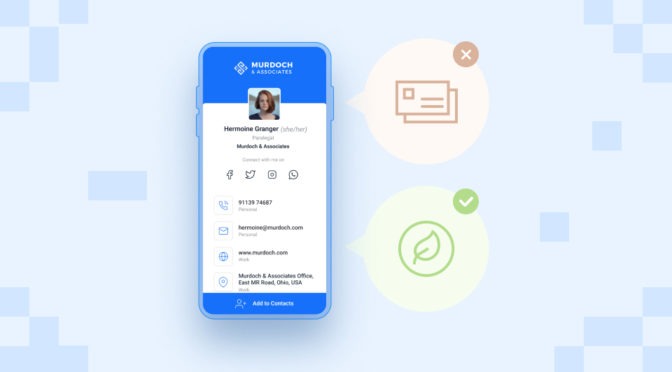Here’s Tony: 🙇
He spent months pursuing seemingly high-intent leads collected in an event. It was going perfectly well—excellent response time, proactive engagement, and all that sweet stuff.
Then, he got ghosted.
But that’s not just Tony’s story. It’s also Mark’s. And Lizzie’s. That’s the experience for most marketers until they figure out how to generate leads at events.
Why is generating leads at an event any different from an online strategy?
First, events give you in-person, 1:1 time with prospects. Second, event attendees are usually interested in what the industry offers. That puts them miles ahead of your cold outreach leads.
Now, the question is: what must be your approach to event lead generation? Let’s find out.
Table of content
- What is event lead generation?
- Playbook: How to generate leads at an event
- Ramp up your lead generation pipeline with events
- Frequently asked questions
What is event lead generation?
Event lead generation uses business or networking events (conferences, summits, webinars, etc.) to identify and capture prospects.
It involves interacting with them and subtly pitching your product/brand. Then, you get the lead to exchange contact information and have your sales or marketing team follow up on it later.
It sounds like a lot of work, but it’s worth the effort. Having an event lead generation strategy will let you:
- Craft a more personalized first interaction with your brand
- Gauge prospect interest through measurable actions (session attendance, etc.)
- Build stronger professional relationships through brand humanization
- Cultivate audience interest through live product demos/keynote addresses
Research suggests that 89% of B2B marketers saw an improvement in their promotional strategy when using event data. And the top metric that indicated this bump in performance was the number of leads generated during events.

How to generate leads at events: An action-oriented playbook
Studies show that 80.4% of B2B professionals believe in-person networking events to be the most impactful marketing and lead generation channels.
That’s also why 86.4% of organizers plan to maintain or increase the number of such events in 2024. Therefore, to maximize ROI from your lead-gen efforts, you must treat B2B events as a viable channel for capturing prospects.
Let’s break down our practical tips for event lead generation based on the different stages of event participation:
Before the event
1. Define your ideal guest personas
Clearly outline the target audience to tailor the event and marketing strategy. According to a study by Sweap, 89% of event marketers believe that events are critical for achieving business objectives, indicating that understanding your audience is vital for success. It’s also important to consider the venue for your event, as it can significantly impact the experience. For instance, if you’re hosting an event in Denver, exploring event venues in Denver can help you find a location that aligns with your audience’s preferences and logistical needs.
♟️Strategies to define ideal persona:
A. Conduct surveys or interviews: Gather insights directly from your audience or target demographics. Use tools like Google Forms, Typeform, or direct interviews to understand their preferences.
⚡Pro tip: QR Codes can be an extremely effective way to get people to participate in surveys from the offline world. Use QR Code-based forms to conduct surveys and capture leads from the physical world.

- Choose a survey template to get started in a blink
- Add logic jumps to your form or quiz and create a customized pathway based on user responses. Provide a streamlined user experience without wasting your lead’s time.
B. Use analytics: Analyze website traffic, social media metrics, and past event data to identify patterns in attendee behavior. Tools like Google Analytics and Facebook Audience Insights can help.
C. Develop personas: Create detailed personas for your ideal guests, including demographics (age, gender, location), psychographics (interests, values), and professional profiles (job roles, industries).
D. Segment your audience: Divide your audience into sub-groups based on common traits to tailor specific parts of your event, such as breakout sessions or content themes.
🧰 Tools to use
- Event management platforms: Cvent or Eventbrite to segment and track attendee engagement
- Customer relationship management (CRM) systems: HubSpot or Salesforce to organize guest data
2. Conduct research to finalize event themes
A report by Bizzabo found that 68% of event attendees feel that content is the most critical aspect of an event. So, to ensure your content is as close to your prospect’s expectations as possible, identify topics and formats that resonate with your target audience.
♟️ Strategies to find event themes
A. Analyze industry trends: Use platforms such as Google Trends, LinkedIn Insights, or industry reports to identify trending topics.
B. Survey your audience: Ask potential attendees directly about their preferred topics or formats through surveys or polls on social media.
C. Review competitor events: Study similar events in your niche to identify successful themes and content gaps.
D. Consult subject matter experts: Collaborate with industry influencers or thought leaders to co-create compelling themes and sessions.
🧰 Tools to use
- Survey and polling tools such as Poll Everywhere, Slido, SurveyMonkey
- Competitor research tools such as SEMrush, SimilarWeb, EventMBInsights
3. Build a marketing strategy to create buzz
Utilize email marketing, social media, and other channels to generate excitement and drive attendance.
♟️ Strategies to create buzz
A. Email marketing: Segment email lists to personalize invitations. Create a multi-touch campaign with save-the-dates, reminders, and exclusive previews. Use tools like Mailchimp or Constant Contact for automated targeted email campaigns.
B. Social media campaigns: Launch teaser content (e.g., speaker reveals, behind-the-scenes clips). Create a branded hashtag to encourage organic sharing—partner with influencers or industry leaders to amplify reach.
C. Content marketing: Publish blog posts, infographics, or videos related to the event themes. Use SEO strategies to ensure event pages rank high on search engines.
D. Paid advertising: Use Google Ads and paid social media campaigns for targeted reach. Use retargeting ads to re-engage people who visited the event page but didn’t register.
🧰 Tools to use
- Email marketing platforms: Mailchimp, Constant Contact, Klaviyo
- Social media management tools: Hootsuite, Buffer, Sprout Social
- Advertising platforms: Google Ads, Facebook Ads Manager, LinkedIn Ads
During the event
1. Host a dedicated networking session for attendees
The majority of B2B professionals want organizers to host dedicated networking sessions.
It helps to keep things interesting here. After all, the more engaged your prospects are, the better their chances of responding to your pitch. Use snappy introductions to familiarize yourself with influential industry figures.
Share your digital business card with them, exchange emails, and set dinner reservations—endless possibilities exist.
♟️ Strategies to host dedicated sessions
A. Create structured networking opportunities: Organize speed networking sessions, industry-specific meetups, or themed discussion tables to foster meaningful connections.
B. Incorporate technology: Use digital business cards to let attendees share their contact details effortlessly and integrate that data into your CRM for follow-up. Equip networking areas with QR Codes for instant exchanges of information and event resources.
C. Facilitate introductions: Assign facilitators to connect attendees with similar interests or industries, ensuring everyone engages effectively.
🧰 Tools to use
- Digital business cards: Uniqode, Popl, Linq
- QR Code reader apps: QR Code Scanner, QRbot, ScanMe
- Lead capture forms: Google Forms, Jotform, Typeform
2. Engage with event participants on social channels
Social media is the best way to get the word out before an event. Events, contests, and award shows don’t matter what they are. The moment you post something online, people will see it.
So, if you’re still figuring out how to generate event leads, remember to involve your social media team.
♟️ Strategies to engage with participants
A. Create an event hashtag: Choose a unique, memorable hashtag and promote it across all marketing materials. Monitor its usage during the event to track engagement.
B. Encourage live posting: Offer incentives like giveaways or shoutouts for attendees who post about the event using the hashtag.
C. Go live: Stream key sessions on platforms like Instagram, Facebook, or LinkedIn Live to engage remote audiences and capture leads.
D. Engage in real-time: Respond to attendee posts, comments, and questions on social media to create a sense of community and encourage further interactions.
LEARN: How QR Codes can help you engage attendees in an event
🧰 Tools to use
- Social media management tools: Hootsuite, Buffer, Sprout Social
- Live streaming platforms: Instagram Live, Facebook Live, LinkedIn Live
- Hashtag monitoring tools: Brand24, Keyhole, Mention
3. Use live event activities to collect lead information
Live activities and interactions are among the surest solutions when discussing how to generate leads at events.
This is similar to what you’d do as a participant. The only difference is that, as an organizer, you have greater control over curating your prospects’ experiences.
The idea here is to make each interaction count. For example, if you’re hosting a real estate event, you could host a seminar that discusses conversion tactics for realtors. Then, have attendees sign a pre-registration form to capture contact information. And if your event involves on-site presentations, live product demos, or large-scale conferences, having expertly trained AV stagehands ensures that your audio-visual setup runs seamlessly helping you maintain audience engagement and avoid costly technical delays.
♟️ Strategies to collect lead information
A. Interactive booths or activities: Set up experiential booths where attendees can scan QR Codes to access content, participate in contests, or sign up for exclusive offers.
B. Gamify lead collection: Use games like trivia, scavenger hunts, or prize wheels that require attendees to provide contact information to participate. Integrating these activities into your event ticketing system can streamline the process, making it easy to engage attendees while collecting valuable leads.
C. Use workshops or panels: During sessions, gather attendee preferences using live polls or Q&A tools integrated with lead capture forms.
D. Monitor engagement: Use analytics tools to track scans, taps, or form submissions in real time to measure effectiveness.
🧰 Tools to use
- QR Code tools: Uniqode, QR Tiger, Flowcode
- Interactive engagement tools: Slido, Kahoot!, Mentimeter
After the event
1. Segment the collected data & add it to your CRM

When discussing generating leads at events, the first logical step is to add all the collected data to your CRM (customer relationship management) setup.
For example, if you use Uniqode for digital business cards, you can directly link your account with Salesforce through your callback URL.
You can also use your API key and organization ID to connect with Zapier and access 700+ CRMs, including HubSpot, Zoho, Pipedrive, and more.
♟️ Strategies to segment lead information
A. Organize data: Categorize leads into groups such as job role, industry, region, or specific interests. Use tags and filters in your CRM for easy segmentation.
B. Analyze engagement levels: Identify high-intent leads by reviewing actions taken during the event, such as participation in workshops, sessions attended, or forms filled out.
C. Create targeted campaigns: Use segmentation to design tailored email sequences, offers, or outreach plans for each lead category.
🧰 Tools to use
- Uniqode
- Directly link to Salesforce via a callback URL
- Connect with Zapier using an API key and organization ID
- Salesforce
- A robust CRM for managing and segmenting leads
- Zapier
- A tool that integrates Uniqode with over 700 CRMs, enabling automated workflows
- Compatible CRMs include:
- HubSpot
- Zoho CRM
- Pipedrive
- And many others.
2. Score and grade each lead to smoothen the post-event nurturing workflow

High-performing post-event workflows always start with lead scoring and grading.
Scoring your lead is easy enough. You only have to track their interaction with your brand over time. In several instances, this may have begun even before the event. For example, a prospect could have visited your site or scanned your product description pages.
Grading is about how well a lead matches your ideal customer persona. This data comes from your interactions with them during your event. You only want to reach a lead if they have a high grade or score.
♟️ Strategies to score and grade lead information
A. Define scoring criteria: Assign scores based on engagement metrics, such as event participation, session attendance, or expressed interest.
B. Use grading systems: Grade leads (e.g., A, B, C) to rank them by their alignment with your ideal customer profile.
C. Automate scoring: Set up automated workflows in your CRM to dynamically score leads based on pre-defined triggers like email opens, link clicks, or resource downloads.
D. Handoff to sales: Pass high-scoring leads to your sales team for immediate action while nurturing lower-priority leads through automated campaigns.
🧰 Tools to use
- Marketing automation platforms: Marketo, ActiveCampaign, Mailchimp
- Analytics tools: Google Analytics, Hotjar
- Event management platforms: Cvent, Bizzabo
3. Set dedicated follow-up reminders without spamming prospects
Follow-up reminders are not a daunting task. The only mistake most people make is that they do it immediately after the event.
You have to give your leads some breathing room.
Start with a simple “thank you” email to show your appreciation. You could even publish a post-event highlight page to remind prospects of the experience.
♟️ Strategies for effective follow-ups
A. Personalize outreach: Reference specific event interactions, such as sessions attended or questions asked, to make your follow-up relevant and engaging.
B. Use multi-channel approaches: Combine emails, LinkedIn messages, and phone calls to maintain consistent communication.
C. Set reminders: Schedule follow-up reminders for your team to ensure timely communication without overwhelming the prospect.
D. Offer value: Provide exclusive resources, such as post-event recaps, recordings, or case studies, to keep prospects engaged.
🧰 Tools to use
- Email marketing tools: Mailchimp, Constant Contact, Sendinblue
- Calendar and task management tools: Google Calendar, Microsoft Outlook, Productive, Asana
- Content management tools: WordPress (for post-event highlight pages), Canva (for visual resources like infographics or recaps)
- Call and engagement platforms: Aircall, RingCentral
4. Measure event ROI with the relevant metrics
Measuring event ROI is simple enough for tangible metrics like venue costs or revenue generated by each attendee. However, things aren’t so simple in the context of lead generation.
♟️ Strategies to measure event lead capturing ROI
A. Set clear KPIs: Define metrics such as leads generated, lead conversion rate, attendee satisfaction, and cost per lead.
B. Analyze data trends: Compare pre-event, during-event, and post-event engagement levels to evaluate overall performance.
C. Use feedback for improvement: Conduct surveys or interviews with attendees to understand what worked and areas for improvement.
D. Report insights: Share findings with your team to guide future events and optimize strategies.
🧰 Tools to use
- Survey and feedback tools: Uniqode, SurveyMonkey, Typeform, Google Forms
- Data visualization and reporting tools: Tableau, Microsoft Power BI, Google Data Studio, BlazeSQL
- Collaboration tools: Slack, MicrosoftTeams
Ramp up your lead generation pipeline with events
That’s a wrap on our best tips to generate leads at events. They also double as instructions to streamline event management and maximize audience engagement.
Stick to them, and they’ll simplify the follow-up process while netting you leads who are interested in your offerings. As for initiating and maintaining contact with these prospects, you can choose Uniqode’s digital business cards that give you:
- Seamless access to lead data through secure QR Codes
- Two-way contact-sharing in digital business cards so others can reach out to you just as quickly
- Integrations with your existing tools and much more
Book a demo today and learn more about what we offer.

Frequently asked questions
1. What are effective strategies for generating leads at events?
Key strategies include setting up engaging booths, offering valuable resources, and interacting meaningfully with attendees.
2. What are some common mistakes to avoid when generating leads at events?
- Not having a clear goal: Define your target audience and what you want to achieve with your lead generation efforts.
- Ignoring follow-up: Nurturing leads after the event is crucial for conversion.
- Not tracking your results: Analyze your data to identify what’s working and what’s not.
- Focusing solely on quantity over quality: Prioritize leads most likely to convert into customers.
3. How can I capture lead information efficiently during an event?
Utilizing digital business cards, QR Code, and lead retrieval tools can streamline the process.
4. What role does pre-event marketing play in lead generation?
Pre-event marketing creates buzz and attracts potential leads, setting the stage for successful engagement.
5. How can I effectively follow up with leads after an event?
Personalized outreach, timely communication, and offering valuable resources are essential for post-event follow-up.
6. How can I ensure my event stands out to attract quality leads?
Offering unique experiences, interactive content, and explicit value propositions can make your event more appealing.
Sukanya is a Content Marketer at Uniqode and a former journalist who fuses newsroom curiosity with SEO-savvy storytelling to help brands grow online. She’s on a mission to demystify digital business cards, digging deep into data, trends, and user behavior to spotlight how they transform how we network and generate leads. Her content doesn’t just inform—it equips. Outside the digital realm, she’s either rescuing animals, getting lost in a plot twist, whipping up kitchen experiments, or chasing stories worth telling.












